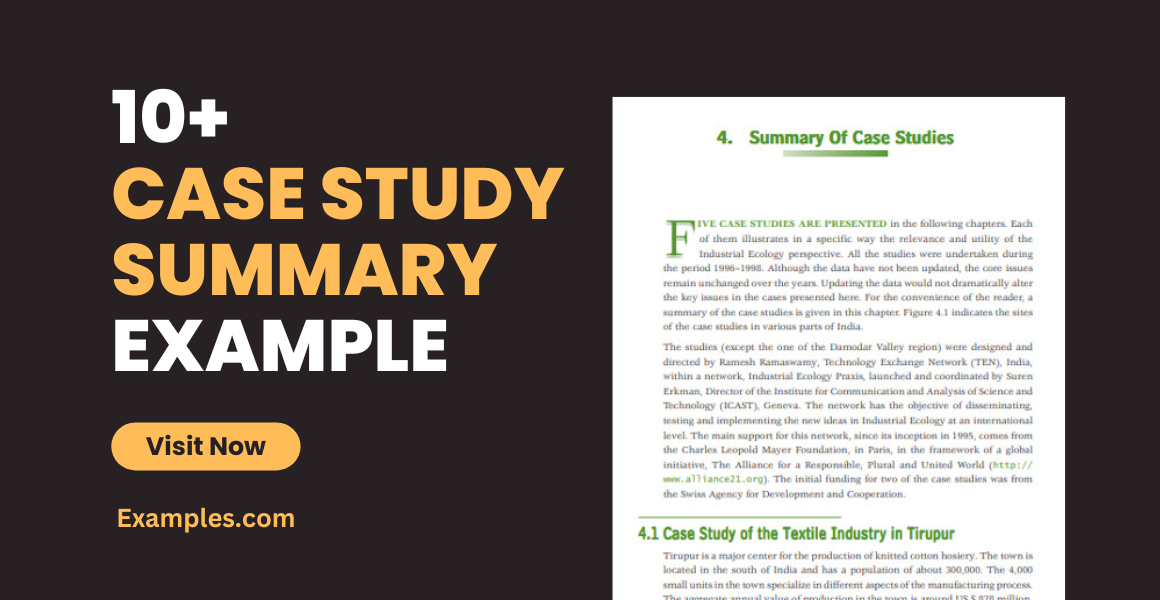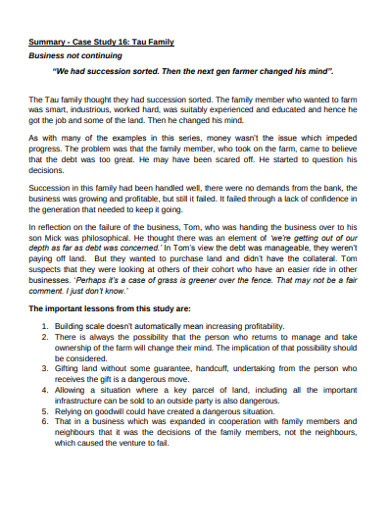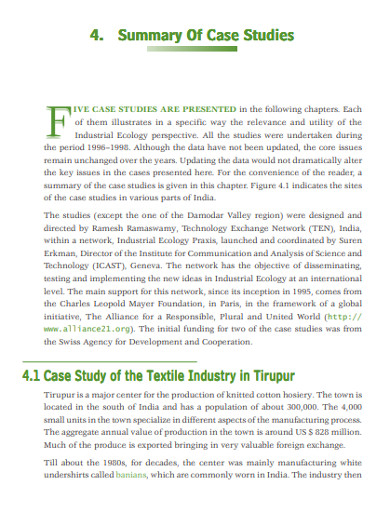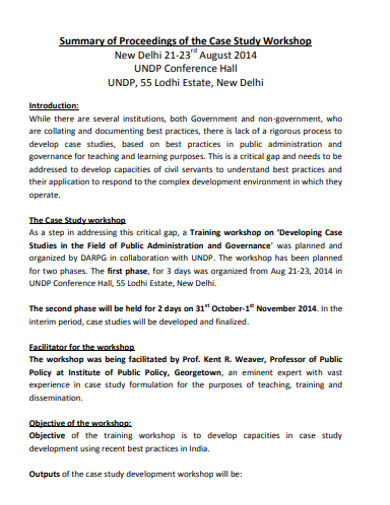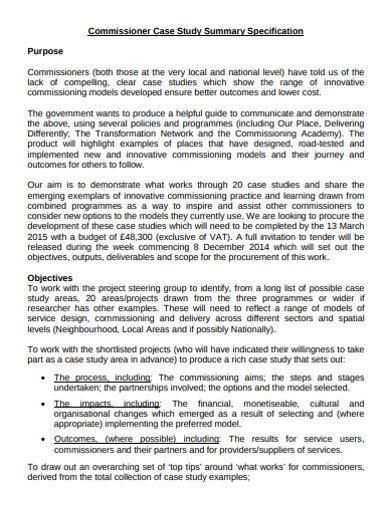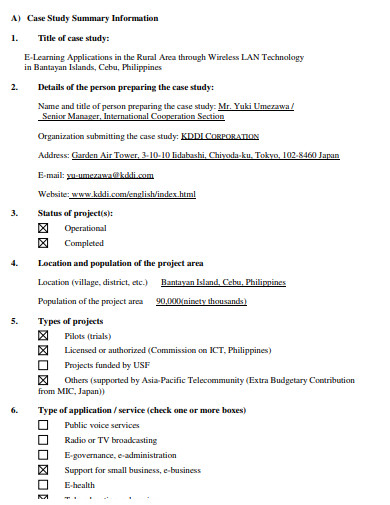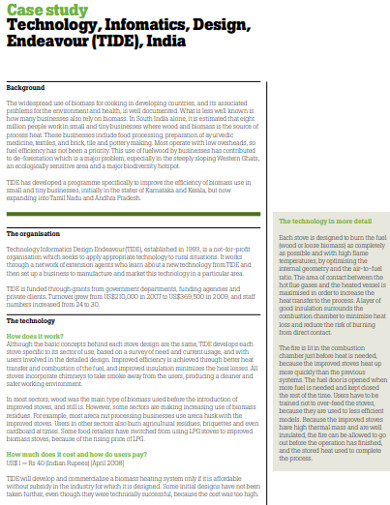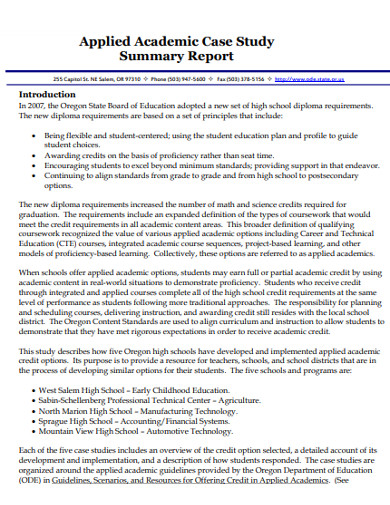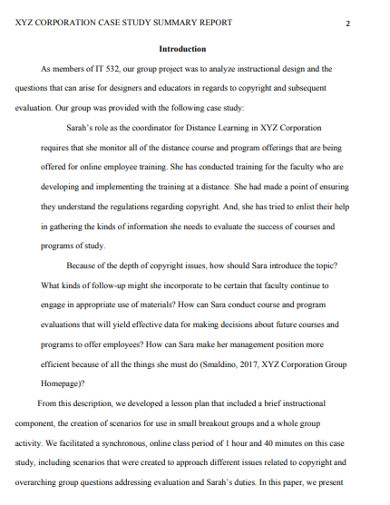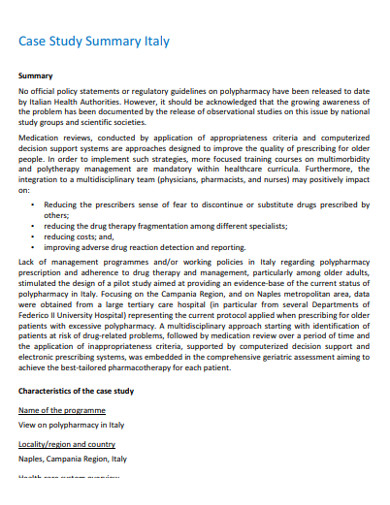10+ Case Study Summary Examples to Download
It doesn’t always take an expert to fix a problem. Have you ever had a light in your house that doesn’t go on? Well, it’s not an engineering project, so it wouldn’t take a genius to identify if it’s a busted light bulb or a wiring issue. For these two cases, you can easily solve one problem but might need the help of an electrician for the other. When you encounter a particular situation, basic knowledge can help you to overcome it. And when you’ve dealt with the dilemma, what comes out may be additional knowledge on how to fix similar problems. And sometimes, life just gives you these things to test how well you can handle it. In academic settings, the presentation of these solutions can be considered a case study summary.
To get a firm grip on the principles and characteristics of discipline, you may need to test out what you know through given situations. In the fields of social science, business, and research, these situations are called case studies. And the initial analysis report is called a case study summary. A case executive summary is what the readers first encounter before they decide if the case is worth examining. Your case summary saves readers time in understanding the situation you’ve presented. It holds important information about medical or business case studies that your readers need to take in.
What a Case Study Summary Isn’t
Many may assume that a case study summary is the same as an abstract. They are relatively similar, but they have their key differences. A research executive summary is for those outside the academic spectrum. An abstract is for professors, research analysts, and anyone in the academe. The case study summary is also not the introduction, although it may contain similar content, they don’t share the same purpose. It is also not the preface of the study. Most importantly, it is not just a collection of random highlights within the analysis. The format of a case study summary is for the understanding of the collected data.
10+ Case Study Summary Example
A lot of case studies are hard to understand. Some people even dread the idea of reading the whole research project from start to finish. Thankfully, there is a more natural way to grasp the context of the study. That is through case study summaries. If you are working o a case study, you should be able to write a comprehensive overview of your own. To help you figure out the outline and format of your summary, here are 10+ case study summary examples you can check out.
1. Master Technology Case Study Summary Example
2. Family Case Study Summary Example
3. Case Study Summary Report Example
4. Sample Case Studies Summary Example
5. Case Studies Summary Workshop Example
6. Commissioner Case Study Summary Example
7. Case Study Summary Information Example
8. Formal Case Study Summary Example
9. Academic Case Study Summary Example
10. Corporation Case Studies Summary Example
11. Standard Case Study Summary Example
The Making an Effective Case Study Summary
As a researcher, you wouldn’t want your readers to have a hard time making sense of your case analysis. All the effort you put into making that can go to waste if it isn’t easy to understand. What you need is a compelling case study summary. If your review has the right information, your reader can level with you in no time. Here are some tricks to making a good case study summary.
1. Decide the Need
After writing an entire case study, the last thing you want is more report writing. That is why the first step to making a useful case summary is deciding if there is a need to have one. Some case studies that are considerably easier to understand don’t need case study summaries. But if your decision making says that you need it, then you better start!
2. Decide the Length
The length of the summary doesn’t always reflect how much information it holds. It can, however, determine how well of a writer you are. Your overview can be as concise as you want or as detailed as it needs to be. For as long as your research summary is readable, any length will do.
3. Prepare Data
The next step is conducting data analysis to figure out which data you are going to add to your case study summary. Pick out the most important details and the data most likely to raise questions. Anticipating these questions can help you formulate possible answers to add in your summary.
4. Organize Data
Making sure your data is organized is part and parcel to having a comprehensive case study summary. You can write a short introduction to open your summary and explain the purpose of your study. You then explain your solutions to the problem statement. Make sure no factoid overlaps another to avoid confusion.
5. Format Content
A continuous piece of writing can make a reader hesitate. Format your summary in a way that doesn’t seem too daunting. Divide your content, add a few white spaces. You have to let your readers’ eyes rest when scanning your summary. Don’t make your summary datasheet intimidating to look at.
When handling cases, whether you are a market analyst of a social science researcher, case study summaries are your best friends in data collection.


